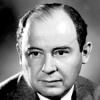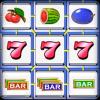Well, nice to find this topic eventually, thanks. There is also huge Lostfalco's thread.
I've gone quickly through last 5 pages, I'd say ok first 2 posts are some point to start with, but we need to go from substance X + Y +Z to pathway A + B + C and I am not very good at this, maybe somebody with medical background can do this. We can also add the "perfect conditions" for learning - some exercise, not too much stress but also not 0, and enough motivation.
I'd skip learning techniques, because we are talking about - see and remember - and not repeat 10 times and remember half.
One interesting note was "If the ability is not nurtured it usually begins to fade after the age of 6, perhaps as growing verbal skills alter the memory process.[4][5]"
This is practiced in quick reading techniques - you have to stop repeating words in your mind, just let it go. This is also the best way I learn when I read but not always possible. Not when fatigued and I have to spell words aloud 
We do not even fully know what are the mechanisms of action of some nootropics/drugs used and we probably need several actions at the same time and everyone is different so... 
I also find myself not having enough time/energy to micro manage all this.
Some quick info from internet on substances mentioned:
Hydergine (is hard to get and pricy?) /stimulates dopaminergic and serotonergic receptors and blocks alpha-adrenoreceptors/
Keppra (levetiracetam) (rather hard to get and pricy); drug binds to a synaptic vesicle glycoprotein, SV2A, and inhibits presynaptic calcium channels reducing neurotransmitter release and acting as a neuromodulator.
Pramiracetam - did not exhibit any affinity in vitro for dopaminergic, adrenergic, serotoninergic, GABAergic, muscarinic, adenosine (IC50 > 10 μM), and benzodiazepine receptors (IC50 > 1 μM) binding sites. It may be concluded that the mechanism of action of pramiracetam does not appear to be due to a direct action upon DA and 5-HT neurotransmitter systems or various brain receptors. PR (44 and 88 mg/kg i.p.) caused a significant increase in the rate of sodium-dependent high-affinity choline uptake (HACU) into rat hippocampal synptosomes in vitro.
Phenylpiracetam - Just like piracetam, phenylpiracetam does work on the acetylcholine and glutamate systems in the brain. Whereas acetylcholine is strongly involved in attention and memory, glutamate is associated with brain excitation and alertness. A variety of other neurotransmitters are also bolstered by phenylpiracetam, including dopamine, which promotes pleasure, motivation and attention, and GABA, which produces relaxation. The increase in GABA action also enhances levels of serotonin, which is linked to feelings of contentment. (on a side not this could be used instead of Hydergine maybe for dopamine)
Sunifiram (be careful with dose, half life is typically 30-45 minutes, from my personal use i'd say if you dose this 2-3 days a row then it lasts long) - an ampakine, a compound that interacts with the glutamatergic AMPA receptors to boost the activity of the neurotransmitter glutamine, and as such may deliver significant mood and energy improvement as well as cognitive benefits. Not fully researched and not approved to use on humans but well seems safe in safe dose range.
It's a weak agonist at the glycine site; but, powerfully modulates NMDA channel activity through activation of CaMKII and Src kinase and PKC (alpha) activation).
Cocoa -?
Centrophenoxine (one that I personally like and would add to any list) - is classified as a cholinergic, a substance that delivers or enhances the action of choline. It’s this cholinergic capability that makes it an efficient and effective nootropic on its own and a powerful potentiator when used in combination with other nootropics, particularly the racetams.
Modafinil (took once or twice, but did not need it - have to try again)- The locus of the monoamine action of modafinil was also the target of studies, with effects identified on dopamine in the striatum and, in particular, nucleus accumbens,[45][46]norepinephrine in the hypothalamus and ventrolateral preoptic nucleus,[47][48] and serotonin in the amygdala and frontal cortex.[49] Modafinil was screened at a large panel of receptors and transporters in an attempt to elucidate its pharmacology.[50] Of the sites tested, it was found to significantly affect only on the dopamine transporter (DAT), acting as a dopamine reuptake inhibitor (DRI) with an IC50 value of 4 μM.[50] Subsequently, it was determined that modafinil binds to the same site on the DAT as cocaine, but in a different manner. Against the hypothesis that modafinil exerts its effects by acting as a DRI, tyrosine hydroxylase inhibitors (which deplete dopamine) fail to block the effects of modafinil in animals. (..) As such, although it is established that modafinil is a clinically significant DRI, its full pharmacology remains unclear and may be more complex than this single property (i.e., may also include DAT-independent actions, such as "activation of the orexin system")
Aspirin (taking ocasionally) - causes several different effects in the body, mainly the reduction of inflammation, analgesia (relief of pain), the prevention of clotting, and the reduction of fever. Much of this is believed to be due to decreased production of prostaglandins and TXA2. Aspirin's ability to suppress the production of prostaglandins and thromboxanes is due to its irreversible inactivation of the cyclooxygenase (COX) enzyme. Cyclooxygenase is required for prostaglandin and thromboxane synthesis. Aspirin acts as an acetylating agent where an acetyl group is covalently attached to a serine residue in the active site of the COX enzyme.[1] This makes aspirin different from other NSAIDs (such as diclofenac and ibuprofen), which are reversible inhibitors. However, other effects of aspirin, such as uncoupling oxidative phosphorylation in mitochondria, and the modulation of signaling through NF-κB, are also being investigated.
Ibudilast (I like this one)- is an anti-inflammatory drug used mainly in Japan, which acts as a phosphodiesterase inhibitor, inhibiting the PDE4 subtype to the greatest extent,[1] but also showing significant inhibition of other PDE subtypes.[2][3] Ibudilast has bronchodilator, vasodilator[4] and neuroprotective effects,[5][6] and is mainly used in the treatment of asthma and stroke.[7] It inhibits platelet aggregation,[8] and may also be useful in the treatment of multiple sclerosis.
PRL-8-53 *(for me it did not provide any learning boost but better recall of past memories, might be placebo) - The exact mechanism of action of PRL-8-53 remains unknown. Doses up to 200 mg/kg are not observed to have stimulant properties, and a dosage of 20 mg/kg does not potentiate the effects of dextroamphetamine in rats.[1] It displays possible cholinergic properties, and potentiates dopamine while partially inhibiting serotonin. PRL-8-53 reverses the catatonic and ptotic effects of reserpine.
Nicotine (just bought 2 sets of nicotine gum) - Nicotine acts as a receptor agonist at most nicotinic acetylcholine receptors (nAChRs),[4][5] except at two nicotinic receptor subunits (nAChRα9 and nAChRα10) where it acts as an receptor antagonist. Nicotine is highly addictive. Nicotine is frequently used for its performance-enhancing effects on cognition, alertness, and focus.[38] A meta-analysis of 41 double-blind, placebo-controlled studies concluded that nicotine or smoking had significant positive effects on aspects of fine motor abilities, alerting and orienting attention, and episodic and working memory.[39] A 2015 review noted that stimulation of the α4β2 nicotinic receptor is responsible for certain improvements in attentional performance;[40] among the nicotinic receptor subtypes, nicotine has the highest binding affinity at the α4β2 receptor (ki=1 nM), which is also the biological target that mediates nicotine's addictive properties.
Galantamine (didn't work well for me - I was feeling unwell after this) - is a potent allosteric potentiating ligand of human nicotinic acetylcholine receptors (nAChRs) α4β2, α7/5-HT3, α3β4, and α6β4 in certain areas of the brain, as well as a weak competitive and reversible cholinesterase inhibitor in all areas of the body.[15] It increases the concentration and thereby action of acetylcholine in certain parts of the brain. It has shown activity in modulating the nicotinic cholinergic receptors on cholinergic neurons to increase acetylcholine release.
Tadalafil (mentioned by Lostfalco) - is a PDE5 inhibitor marketed in pill form for treating erectile dysfunction (ED). half-life (17.5 hours) compared to sildenafil and vardenafil (both 4–5 hours). These drugs also inhibit other PDE enzymes. Sildenafil and vardenafil inhibit PDE6, an enzyme found in the eye, more than tadalafil.[9] Some sildenafil users see a bluish tinge and have a heightened sensitivity to light because of PDE6 inhibition.[10] Sildenafil and vardenafil also inhibit PDE1 more than tadalafil.[9] PDE1 is found in the brain, heart, and vascular smooth muscle.[9] It is thought that the inhibition of PDE1 by sildenafil and vardenafil leads to vasodilation, flushing, and tachycardia.[9] Tadalafil inhibits PDE11 more than sildenafil or vardenafil.[9] PDE11 is expressed in skeletal muscle, the prostate, the liver, the kidney, the pituitary gland, and the testes.[9] The effects on the body of inhibiting PDE11 are not known. The inhibition of phosphodiesterase type 5 (PDE5) enhances erectile function by increasing the amount of cGMP. Cyclic guanosine monophosphate (cGMP) is a cyclic nucleotide derived from guanosine triphosphate (GTP). cGMP acts as a second messenger much like cyclic AMP. Its most likely mechanism of action is activation of intracellular protein kinases in response to the binding of membrane-impermeable peptide hormones to the external cell surface. cGMP is a secondary messenger in phototransduction in the eye. In the photoreceptors of the mammalian eye, the presence of light activates phosphodiesterase, which degrades cGMP. The sodium ion channels in photoreceptors are cGMP-gated, so degradation of cGMP causes sodium channels to close, which leads to the hyperpolarization of the photoreceptor's plasma membrane and ultimately to visual information being sent to the brain.
Noopept - modulates the acetylcholine system as well as the AMPA receptors. (not really know mechanism)
Vinpocetine - (I was looking for something active on sodium channels, but realized later that Sunifiram is probably doing this and so does Nefiracetam)
- Neuroprotective against a wide array of neurotoxic chemicals – through inhibition of voltage-gated sodium channels and reduction of calcium-influx into neuronal cells[1]
- Anti-inflammatory activity – reduces TNFα-induced expression of pro-inflammatory molecules[2]
- Cerebral vasodilation through phosphodiesterase (PDE) type-1 inhibition – increased blood flow in the brain[3]
- Improved brain metabolism due to increased glucose availability – leading to increased neuronal ATP
- Upregulates acetylcholine, noradrenaline, serotonin, and dopamine receptors
Voltage-gated sodium channels, which are responsible for the generation of action potentials in the brain, are phosphorylated by protein kinase C (PKC) in purified form. Activation of PKC decreases peak sodium current up to 80 percent and slows its inactivation for sodium channels in rat brain neurons and for rat brain type IIA sodium channel alpha subunits heterologously expressed in Chinese hamster ovary cells. These effects are specific for PKC because they can be blocked by specific peptide inhibitors of PKC and can be reproduced by direct application of PKC to the cytoplasmic surface of sodium channels in excised inside-out membrane patches. Modulation of brain sodium channels by PKC is likely to have important effects on signal transduction and synaptic transmission in the central nervous system.
So if you ask me I'd try with something like (I've put an X for those that I have tried and bold those that I use frequently):
Grapefruit juice (because its good  ) X
) X
Aspirin/Ibudilast X
Centrophenoxine X
Modafinil X
Levetiracetam
Phenylpiracetam
Sunifiram X or I guess Oxiracetam X
Nicotine
NSI-189 X
Tadalafil (I'd really like some of this cheap :( )
(now talk about the risk...I'd probably go for it but don't have Phenylpiracetam, Levetiracetam, Tadalafil)






























































